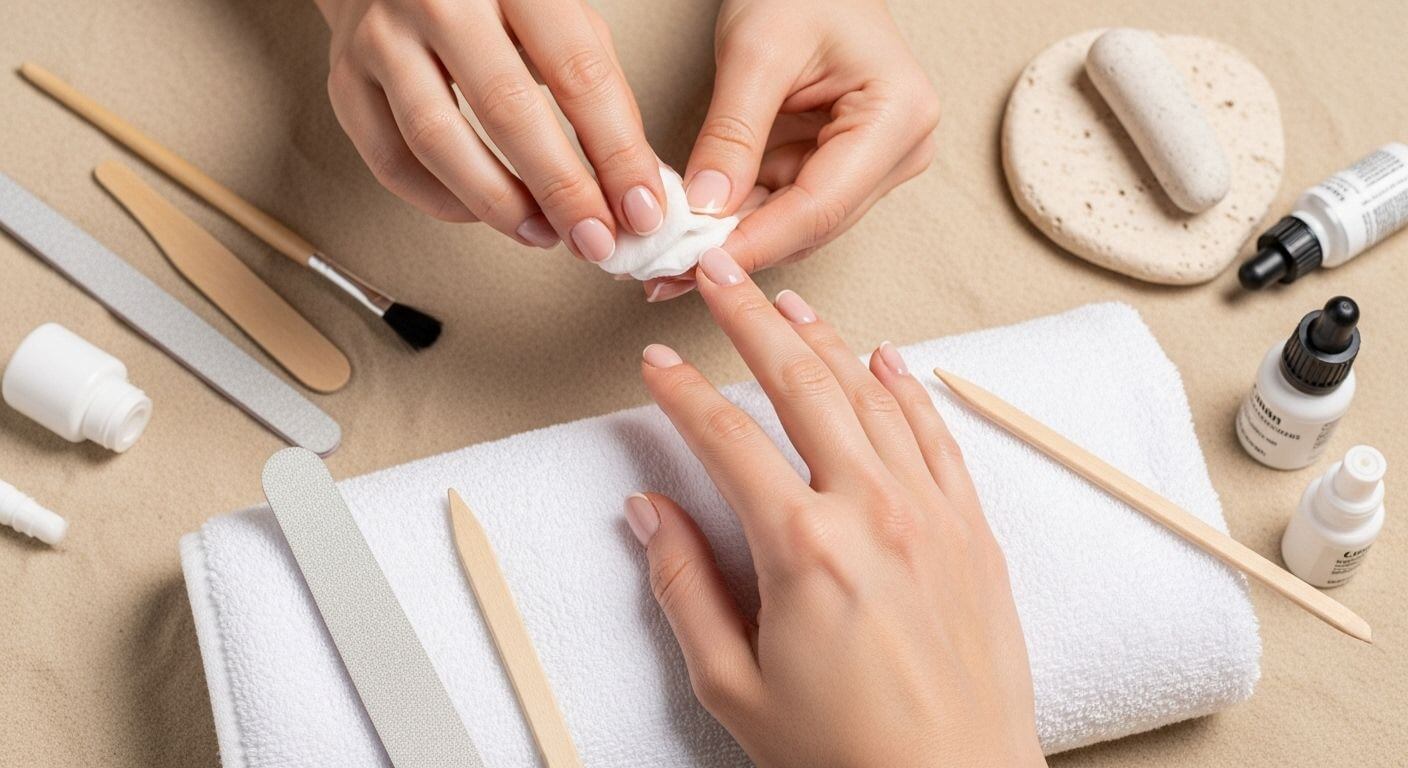
Vegan nail polishes are conquering drugstores and cosmetic shelves, and more and more people are wondering how these colors actually differ from regular polishes. Surprisingly, many conventional nail polishes actually contain animal ingredients like guanine from fish scales or carmine from lice. What hardly anyone expects, however, is that vegan alternatives not only avoid these additives but are often also free from harmful chemicals like formaldehyde or toluene, offering a cleaner choice for better health. Already over 30 percent of all new nail polishes in Germany are produced vegan and thus send a strong signal for sustainable care.
Table of Contents
- The basics of vegan nail polishes: What is it?
- Why vegan nail polishes matter: Environment and health
- The ingredients of vegan nail polishes: What's inside?
- Differences Between Vegan and Conventional Nail Polishes
- Vegan nail polish in practice: application and care
Quick overview
| Takeaway | Explanation |
|---|---|
| You avoid harmful chemicals. | Vegan nail polishes contain no potentially harmful substances like formaldehyde or toluene. |
| Sustainable ingredients are crucial. | Vegan polishes use plant-based ingredients instead of animal products, which is more environmentally friendly. |
| Proper preparation is important. | A good manicure starts with careful cleaning and care of the nails for the best results. |
| Regular care increases longevity. | Daily application of nail oil and protection during housework extends the polish's durability. |
The basics of vegan nail polishes: What is it?
Vegan nail polishes are a modern alternative to conventional nail polishes, characterized by their ethical and environmentally conscious composition. At their core, this means these polish formulations are made completely without animal ingredients.
What makes a nail polish “vegan”?
The term “vegan” in nail polishes refers to several essential aspects:
- No animal ingredients: Traditional nail polishes often contain components like guanine (from fish scales) or carmine (from cochineal insects), which are used for coloring and shimmer effects.
- Plant-based alternatives: Instead, synthetic or plant-based pigments and ingredients are used.
According to Utopia, vegan nail polishes are deliberately made without animal products and offer an environmentally friendly alternative.
Environment and health in focus
Besides the ethical component, vegan nail polishes often focus on health and ecological aspects. They frequently avoid harmful chemicals like formaldehyde, toluene, and dibutyl phthalate (DBP), which can be found in conventional polishes. ZDF reports that such substances can potentially be harmful to health.
For consumers, this means not only an ethical decision but also a conscious choice for better nail care. Vegan nail polishes represent a trend towards more sustainability and health awareness in the cosmetics industry.
Important to know: Not every “natural” or “animal-friendly” polish is automatically vegan. It's worth paying close attention to the ingredients and manufacturing processes.
Why vegan nail polishes matter: Environment and health
Vegan nail polishes go far beyond a purely ethical decision and represent a conscious choice for the environment, health, and sustainability. They embody a modern approach in the cosmetics industry that considers the impact of our product choices holistically.
Health benefits
Conventional nail polishes often contain concerning chemicals that pose potential health risks:
- Avoidance of harmful chemicals: Vegan polishes avoid toxins such as formaldehyde, toluene, and dibutyl phthalate (DBP), which are associated with health issues.
- Lower allergy risks: Plant-based ingredients reduce the risk of skin reactions and allergies.
- Protection against hormonal disruptions: Many synthetic chemicals can affect hormonal systems.
According to the Federal Environment Agency, certain chemicals in cosmetic products can pose long-term health risks.
Ecological sustainability
The environmental aspect of vegan nail polishes should not be underestimated. These products actively contribute to environmental protection by:
- Less microplastic: Avoid synthetic plastic components often found in conventional polishes.
- Biodegradable ingredients: Use natural, more environmentally friendly raw materials.
- Reduced chemical load: Minimizes the release of harmful substances into ecosystems.
When selecting sustainable nail care, these aspects play a decisive role.
Important to understand: Vegan nail polishes are more than a trend. They are a conscious step towards a healthier, more responsible cosmetic culture that considers both individual and global health aspects.

The ingredients of vegan nail polishes: What's inside?
Vegan nail polishes fundamentally differ from conventional polishes through their carefully selected, animal-free, and health-conscious ingredients. They represent a modern formulation technology that combines quality, sustainability, and health awareness.
Basic polymer and base
The base of vegan nail polishes is usually Nitrocellulose, a polymer that acts as a film former. Unlike traditional polishes, this base is combined with plant-based or synthetic solvents:
- Ethyl acetate: A plant-derived solvent that is more environmentally friendly than petrochemical alternatives.
- Butyl acetate: Another natural solvent that evaporates quickly and allows for an even application.
- Bio-based resins: Replace conventional synthetic resins with sustainable, plant-based alternatives.
According to Wikipedia, these components form the basis of modern nail polish formulations.
Color pigments and additives
Vegan nail polishes rely on innovative, animal-free dyes and additives:
- Plant-based pigments: Extracts from flowers, fruits, and minerals replace traditional animal dyes.
- Synthetic shimmer pigments: Artificially produced shimmer pigments without the use of fish scales or insect products.
- Natural UV filters: Mineral sunscreen components such as zinc oxide or titanium dioxide.
For UV nail polishes, this means a completely new formulation philosophy.
Conscious avoidance of harmful substances
The X-Free classification indicates the degree of toxin reduction:
The following table summarizes the commonly used designations in the field of low-toxin, vegan nail polishes ("X-Free" classification) and their meanings in a condensed form.
| Designation | Avoidance of the following substances |
|---|---|
| 3-Free | Formaldehyde, toluene, dibutyl phthalate (DBP) |
| 5-Free | Like 3-Free plus camphor, formaldehyde resin |
| 7-Free | Like 5-Free plus two additional harmful substances |
This overview helps to better understand product labels and make conscious choices.
- 3-Free: Free from formaldehyde, toluene, and dibutyl phthalate
- 5-Free: Additionally free from camphor and formaldehyde resin
- 7-Free: Avoidance of additional potentially concerning substances
Important to understand: Vegan nail polishes are more than a product – they are a statement for conscious consumption, health, and environmental protection.
Differences Between Vegan and Conventional Nail Polishes
Nail polishes have a long development history, and vegan formulations represent a significant advancement in the cosmetics industry. They differ in several essential aspects from traditional nail polishes that have been the standard for decades.
To provide a quick overview of the fundamental differences between vegan and conventional nail polishes, the following table compares key aspects.
| Aspect | Vegan Nail Polishes | Conventional Nail Polishes |
|---|---|---|
| Ingredients | Plant-Based or Synthetic Pigments | Animal Ingredients like Guanine, Carmine |
| Harmful Chemicals | Mostly Free of Formaldehyde, Toluene, DBP | Often Contain Formaldehyde, Toluene, DBP |
| Environmental Friendliness | Focus on Sustainability and Reduced Environmental Impact | Often Problematic Solvents and Microplastics |
| Health Aspect | Reduced allergy risk, no hormonal disruptors | Increased risk due to questionable substances |
Ingredients and composition
The fundamental difference lies in the origin and quality of the ingredients:
- Animal vs. plant-based pigments: Conventional polishes often use guanine from fish scales or carmine from cochineal insects for shimmer and color effects.
- Chemical composition: Traditional polishes often contain problematic chemicals such as formaldehyde, toluene, and dibutyl phthalate.
- Sustainable alternatives: Vegan polishes rely on plant-based pigments, bio-based resins, and environmentally friendly solvents.
According to ZDFheute, conventional nail polishes often pose health risks due to their ingredients.
Ethical and health aspects
Vegan nail polishes differ fundamentally in their approach:
- Health-conscious formulation: Avoidance of potential health risks from harmful substances.
- Transparent production: Clear labeling and disclosure of ingredients.
For UV nail polishes, this means a revolution in product development.
Quality and performance
Contrary to common prejudices, vegan nail polishes offer no compromises in terms of quality:
- High-quality pigmentation: Modern plant-based dyes guarantee intense, long-lasting colors.
- Innovative technologies: Development of synthetic shine pigments without animal ingredients.
- Improved durability: Modern formulations often outperform conventional polishes in longevity and shine.
Important to understand: Vegan nail polishes are not just a niche solution but represent the future of nail care – ethical, healthy, and high-quality.

Vegan nail polish in practice: application and care
The practical application of vegan nail polishes differs only slightly from conventional polishes. However, preparation, application techniques, and care instructions are crucial to achieve optimal results and promote nail health.
Preparation and prerequisites
A perfect manicure starts with the right preparation:
- Clean the nail: Completely remove residues of old polishes and oils with an alcohol-free nail polish remover.
- Care for the cuticles: Apply a nourishing nail oil or nail cream to condition the nail surface.
- Roughen the nail: A light surface treatment improves the adhesion of the vegan polish.
According to Apotheken Umschau, proper preparation is crucial for a long-lasting manicure.
Application techniques for optimal results
Applying vegan nail polishes requires precision and care:
- Thin layers: Apply the polish in two to three thin, even coats.
- Drying breaks: Allow about one minute to dry between layers.
- Sealing: Use a vegan top coat for additional protection and shine.
Specific curing times and techniques apply for UV nail polishes.
Aftercare and durability
Care after polishing is crucial for healthy, beautiful nails:
- Nail oil: Apply a nourishing nail oil daily to maintain suppleness.
- Gloves: Wear protective gloves when doing housework or coming into contact with cleaning agents.
- Regular renewal: Renew the polish every 7-10 days to avoid fading.
Important to understand: Vegan nail polishes are more than a beauty tool – they are a commitment to health, sustainability, and conscious consumption.
Experience vegan nail polishes on a new level – For beauty without compromise
Have you ever wondered how to enjoy beautiful, healthy nails without compromising ethical principles or well-being? The article has shown how vegan nail polishes offer a real solution – free from animal substances and consciously without aggressive chemicals. But often there is a lack of transparent offers that truly meet all these demands and provide you with inspiring colors for your individual look. This is exactly where we at Nailtime come in.

Choose your personal beauty moment now and discover our range of Duplex Nail Polish 🌱✨ | BIO & vegan – Nailtime. Our bio-based and plant-based UV systems combine ethical values with impressive durability and brilliant colors. Make a conscious decision for sustainable and healthy nail care. Strengthen your radiance with clean, certified products – directly from Germany and specially developed for your needs. Next time you paint your nails, you can start right away and find inspiration as well as help on all topics at Nailtime. Now is the perfect moment to switch to vegan nail polishes and feel good inside and out.
More variety and professional results await, for example, with our 21 Days UV Nail Polish from Nailtime.
Frequently asked questions
What are vegan nail polishes?
Vegan nail polishes are nail polishes that contain no animal ingredients. They consist of plant-based or synthetic ingredients and offer an eco-friendly alternative to conventional nail polishes.
Are vegan nail polishes safe for health?
Yes, many vegan nail polishes avoid harmful chemicals like formaldehyde, toluene, and dibutyl phthalate (DBP). Instead, they use healthier ingredients that minimize the risk of allergies and other health issues.
How do vegan nail polishes differ from conventional nail polishes?
The main difference lies in the ingredients: Vegan nail polishes contain no animal components or harmful chemicals. They rely on plant-based pigments and eco-friendly solvents, while conventional polishes often contain harmful chemicals.
How do I best apply vegan nail polish?
For optimal results, apply the vegan nail polish in thin layers. Let each layer dry briefly and use a vegan top coat for extra protection and shine.



